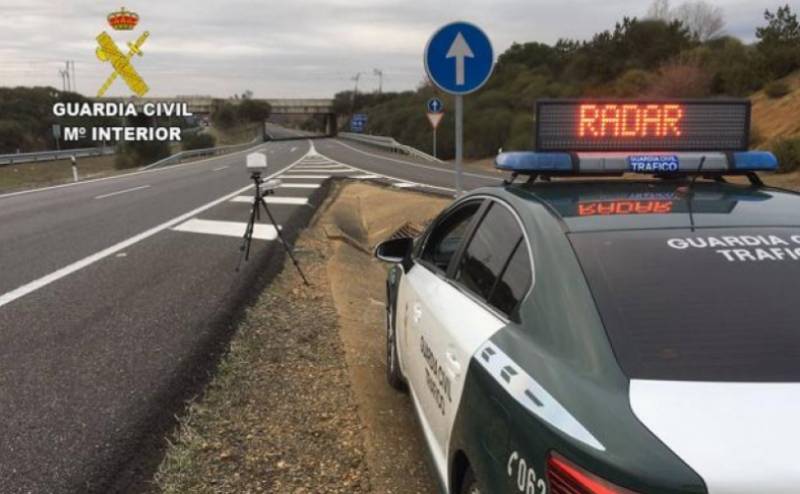Date Published: 16/02/2023
These are the exact speeds you need to be travelling in Spain to get a fine
All of the different speed cameras and radars throughout Spain operate on a small margin of error

Excessive speed is one of the biggest bugbears of the Directorate General of Traffic (DGT) in Spain and to crack down on this dangerous practice, the traffic authorities now operate more than 2,100 different radars across the country.
Drones and helicopters are often frequently used to monitor speed, and these methods can also catch drivers committing a multitude of other motoring sins. Traffic fines for speeding range from 100 euros to more than 600 euros and prison sentences are even considered for those drivers whose recklessness is considered a crime against road safety.
The DGT uses several kinds of devices to pick up speeding but in order to be as fair as possible when doling out fines, all of the radars apply a certain margin of error. So while every road has a fixed limit, e.g. 120 or 90 kilometres per hour, the cameras will never jump to that exact speed when pinpointing which vehicles are breaking the law.
DGT radar margins of error
Depending on the type of radar or traffic control device, different margins of error apply:
- Fixed speed cameras: in zones of up to 100 km/h, margins of 5 kilometres above. On roads with a speed limit of more than 100 km/h, 5% above.
- Mobile radars on tripods or installed in stationary vehicles: same conditions as above.
- Mobile radars: in areas of up to 100 km/h, 7 kilometres above the limit. At more than 100 km/h, 7%.
- Section radars: the same as in the previous cases, but with 3 kilometres and 3% over the margin.
- Pegasus Helicopter Air Radars: 5% off any type of speed limit.
Therefore, by knowing these margins of error drivers can tell the exact speed they need to be doing before the radar clicks into operation. So, using the example of a stationary police car at the side of the road using a mobile radar, on a road with a speed limit of 100 kilometres, motorists usually won’t be fined unless they’re travelling at 107 kilometres.
Section radars use the least margin for error since they are considered to be the most accurate. There are now more than 90 of these cameras in Spain and they are capable of calculating the average time it should take when travelling between two points and adhering to the speed limit. If a car gets from point A to point B faster than it should, these radars will issue a fine.
Find all the latest motoring and travel news here or join our Driving in Spain Facebook group for regular updates
Image: Guardia Civil
Loading
Sign up for the Spanish News Today Editors Roundup Weekly Bulletin and get an email with all the week’s news straight to your inbox
Special offer: Subscribe now for 25% off (36.95 euros for 48 Bulletins)
OR
you can sign up to our FREE weekly roundup!
Read some of our recent bulletins:
Discount Special Offer subscription:
36.95€ for 48 Editor’s Weekly News Roundup bulletins!
Please CLICK THE BUTTON to subscribe.
(List price 3 months 12 Bulletins)
Read more stories from around Spain:
Contact Spanish News Today: Editorial 966 260 896 /
Office 968 018 268



























